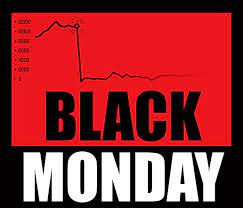On January 20, 2008, the world witnessed a financial maelstrom that would be etched into the annals of economic history as Black Monday. This ominous day saw a synchronized plunge in stock markets worldwide, triggering a chain reaction of economic downturns and ushering in the most severe global financial crisis since the Great Depression of the 1930s. The Origins of the Crisis: The roots of Black Monday can be traced back to the subprime mortgage crisis that unfolded in the United States. Financial institutions, driven by avarice and lax regulatory oversight, had engaged in risky lending practices, particularly in the housing market. As the housing bubble burst, mortgage-backed securities became toxic assets, sending shockwaves through the global financial system. Global Stock Markets in Turmoil: On that fateful Monday, stock markets across the globe experienced precipitous declines. The Dow Jones Industrial Average in the United States plummeted by over 500 points, marking one of the largest single-day point drops in its history. European markets, including the FTSE 100 and DAX, were not immune, shedding significant percentages of their value. Asian markets, too, bore the brunt, with indices in Japan, Hong Kong, and South Korea witnessing substantial losses. Panic and Contagion: The speed and scale of the market decline fueled panic among investors. As fear spread, a contagion effect gripped financial institutions and markets worldwide. Banks faced liquidity shortages, leading to a freezing of credit markets. The interconnectivity of the global financial system meant that problems in one region swiftly reverberated across borders, amplifying the crisis. Government Responses: Governments and central banks scrambled to contain the crisis. Emergency measures were implemented, including interest rate cuts, bank bailouts, and fiscal stimulus packages. The United States, under President George W. Bush, initiated the Troubled Asset Relief Program (TARP), injecting billions of dollars into struggling financial institutions. The Federal Reserve, the European Central Bank, and other central banks coordinated efforts to provide liquidity and stabilize the international financial system. Global Economic Fallout: The repercussions of Black Monday extended far beyond the financial markets. The crisis triggered a severe global recession, causing widespread unemployment, business bankruptcies, and a collapse in consumer confidence. Developing economies, which had been thriving, were not spared, as trade volumes contracted and commodity prices tumbled. The reverberations of Black Monday were felt for years, fundamentally reshaping the economic landscape. Legacy and Lessons Learned: The 2008 financial crisis prompted a reevaluation of regulatory frameworks and risk management practices. Governments worldwide sought to implement reforms to prevent a recurrence of such a catastrophic event. Institutions like the International Monetary Fund (IMF) played a crucial role in providing assistance to countries grappling with economic turmoil.
21 January 2008 Black Monday in worldwide stock markets
